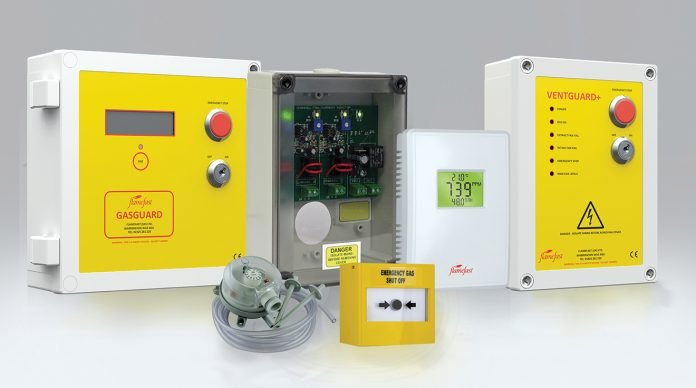There are two main UK standards covering commercial kitchens: BS 6173:2020, which specifies installation and maintenance of gas-fired catering appliances for use in all types of catering establishments (2nd and 3rd family gases); and IGEM/UP/19 Edition 2, on the design and application of interlock devices/associated systems in gas appliance installations in catering.
There have been several changes and technological advancements in commercial kitchens that have led to a need to update the guidance surrounding interlocking.
An interlock between the gas supply and ventilation system for any installation containing Type B appliances has been a requirement for a long time, with some flexibility for Type A appliances. But what needs interlocking?
BS 6173 requires the interlocking of “Mechanical Ventilation Systems”. If the supply air is provided via mechanical means, this must also be interlocked as the operation of the supply fan can a have significant impact on the extract fan’s operation.
The primary method of interlocking is air differential pressure switches. However, as they are prone to blocking grease from passing the exposed probe, fan current monitoring has become the preferred interlocking method as it is perceived as more reliable, despite the concerns over accuracy and indication of air movement.
These concerns have been compounded by the evolution of fans and AHUs. Modern fans are starting to become more efficient at full speed than at lower speeds, so the setpoints on fan current monitors are not always reliable.
To help overcome concerns with both interlocking methods, IGEM/UP/19 has introduced carbon dioxide (CO2) interlocking as the minimum requirement for all new installations. This is to be done alongside either air differential pressure switches or fan current monitoring where applicable.
Most end-users still automatically associate Carbon Monoxide (CO) in kitchens with the widely publicised “silent killer” image. However, CO2 is the primary metric to determine whether an installation is considered safe or not. CO2 is accurately and reliably measured in lower toxicity levels, and as CO is a result of incomplete combustion, often caused by elevated levels of CO2 forming in the supply air for combustion, if you look after the CO2, the CO will look after itself.
Whilst just these two relevant standards are over 70 pages combined, a typical basic installation includes a gas interlock panel, gas solenoid valve, CO2 sensor, air DP switch or fan current monitor, and emergency stop buttons.
For most installations, gas pressure proving may not be required as all new appliances must be fitted with Flame Failure Devices (FFDs). However, an extra level of protection is always recommended for larger installations or high-risk premises such as schools, care homes, or hospitals.
To discuss your requirements, call +44 (0)28 9036 5555, e-mail gavin@cfquadrant.com or visit www.cfquadrant.ie











